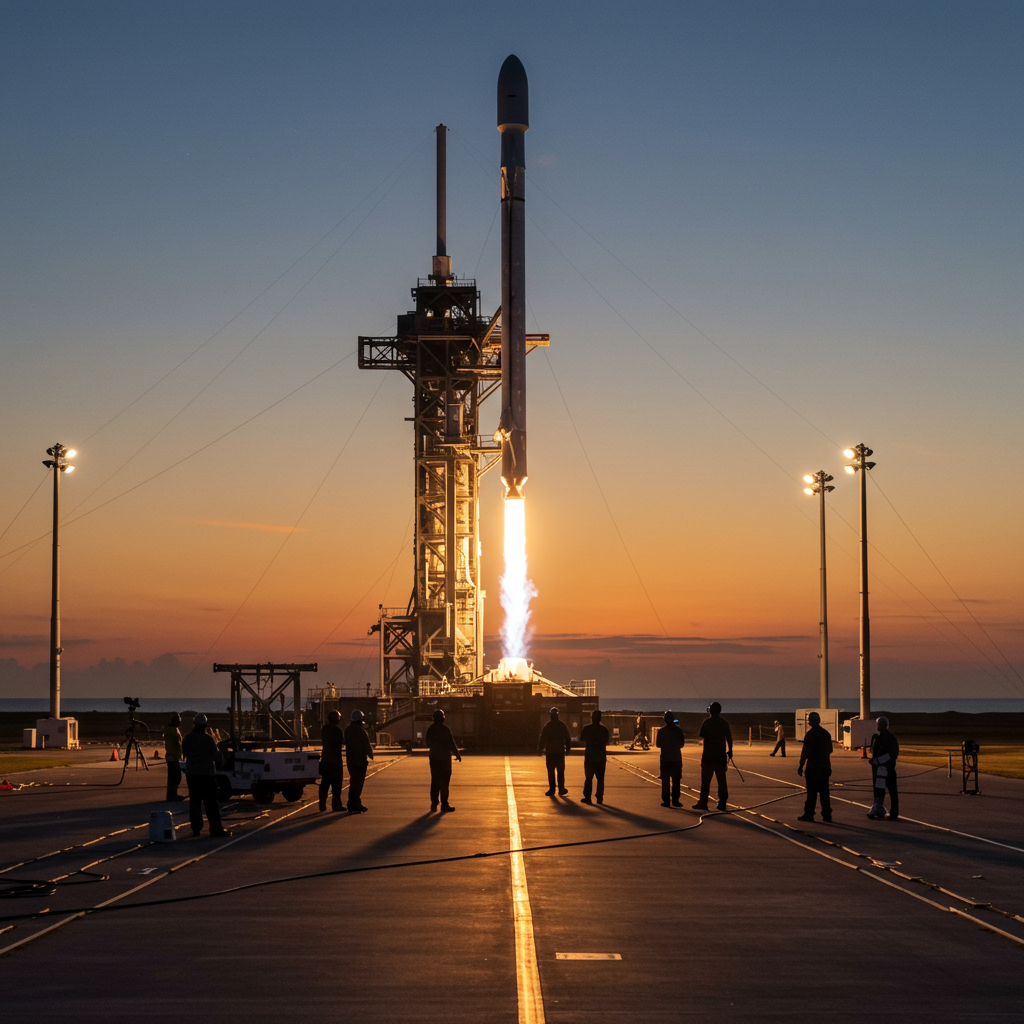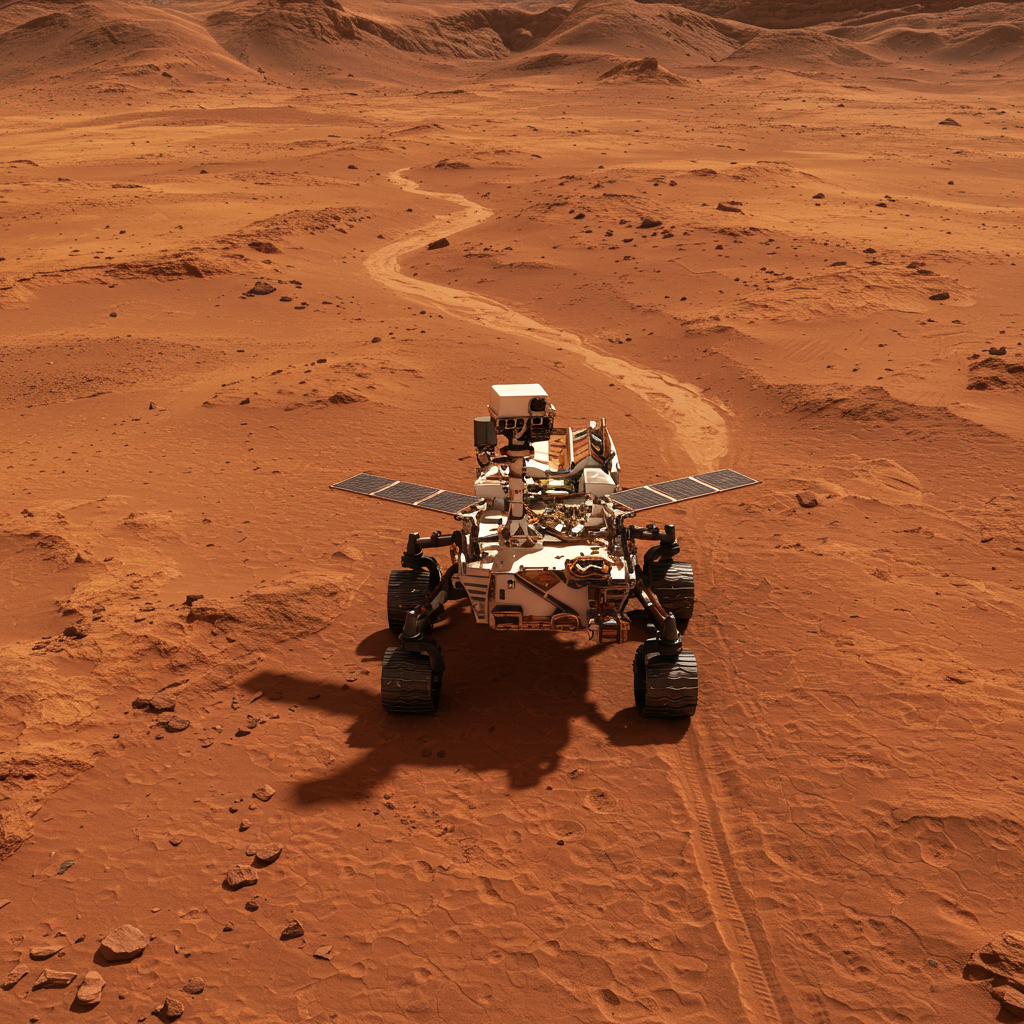SpaceX continues its relentless pursuit of rapid rocket reusability, achieving a significant milestone in the early hours of Saturday, June 28, 2025. The company successfully launched a Falcon 9 rocket from Space Launch Complex 40 (SLC-40) at Cape Canaveral Space Force Station, setting a new record for the quickest turnaround time between missions flown from the same pad. This accomplishment underscores SpaceX’s growing operational cadence and its commitment to driving down the cost of space access through efficiency.
The record-breaking mission, designated starlink 10-34, lifted off precisely at the start of its launch window at 12:26 a.m. EDT (0426 UTC). This followed closely on the heels of the Starlink 10-16 mission, which departed the same pad just two days, eight hours, 31 minutes, and 10 seconds earlier, on June 25. The remarkably short interval shattered SpaceX’s previous best for pad turnaround, set back in March, by nearly 30 minutes, marking a new benchmark in launch operations speed.
Setting the New Standard for Launchpad Efficiency
Achieving a rapid launchpad turnaround record is a complex feat. It involves extensive post-launch inspections, necessary repairs, and preparation of ground systems before a new rocket can be rolled out and stacked. SpaceX’s ability to condense this process into just over two days highlights major advancements in their ground infrastructure, maintenance protocols, and operational logistics at SLC-40. This speed is vital for maintaining the high launch frequency needed to deploy constellations like Starlink and fulfill various commercial and government contracts.
The mission successfully carried 27 Starlink V2 Mini satellites into orbit. Despite earlier concerns about challenging weather conditions that moved across Florida’s Space Coast the night before, the Falcon 9 launched on time, demonstrating SpaceX’s capability to operate within tight environmental margins and schedule constraints. This focus on rapid, reliable access is transforming the economics of sending payloads to space.
The Veteran Booster’s Fifth Flight
The Falcon 9 first stage booster supporting the Starlink 10-34 flight was tail number B1092. This launch marked B1092’s fifth journey to space. Its flight history includes a diverse range of missions:
Starlink 12-13
NROL-69 (a classified mission for the National Reconnaissance Office)
CRS-32 (a cargo resupply mission to the International Space Station)
GPS III SV08 (a navigation satellite launch for the U.S. Space Force)
Approximately eight minutes and 20 seconds after lifting off from Cape Canaveral, B1092 completed a successful landing. The booster touched down softly on the autonomous droneship ‘A Shortfall of Gravitas,’ stationed in the Atlantic Ocean. This was the 115th time this particular vessel has recovered a booster and represented the 469th successful booster landing for SpaceX overall. These increasing recovery numbers underline the maturity and reliability of SpaceX’s reusable booster technology.
A Busy Era for SpaceX and the Space Coast
The Starlink 10-34 mission was the 497th flight of a Falcon 9 rocket to date, nearing the significant 500-flight milestone. The timing of this launch also carried historical weight for the company, occurring precisely 10 years after the ill-fated CRS-7 mission. While that mission experienced an in-flight anomaly, the investigation and resulting improvements led to significant upgrades to the Falcon 9 rocket design, shaping the reliable vehicle used today for these record-breaking flights.
SpaceX’s cadence isn’t limited to a single pad or site. The company had another Starlink mission, Starlink 15-7, scheduled for later the same day from Vandenberg Space Force Base in California. This simultaneous operational capability across multiple launch sites further demonstrates their capacity for high-volume launches. This high tempo is characteristic of operations at Cape Canaveral, which has seen a flurry of activity recently, including other SpaceX Starlink missions, a commercial crew launch, a ULA Atlas V mission, and smallsat rideshare flights, emphasizing the competitive and bustling nature of today’s space industry.
While this new record pertains specifically to launchpad turnaround, SpaceX also holds impressive records for the quickest booster reuse. For example, booster B1088 achieved a remarkable 9-day turnaround between missions in March 2025 from Vandenberg. These distinct records showcase SpaceX’s multi-pronged approach to accelerating space access – not only making boosters fly faster but also preparing launch infrastructure quicker.
The Strategic Importance of Rapid Reuse
Pushing the limits of launchpad turnaround time is strategically critical for SpaceX, particularly for its Starlink broadband internet constellation. Deploying thousands of satellites requires a launch rate unparalleled in history. By minimizing the time a pad is occupied between missions, SpaceX can significantly increase its overall launch capacity without building new, expensive infrastructure. This efficiency directly contributes to reducing the cost per launch, making satellite deployment more affordable and accelerating the expansion of the Starlink network globally.
This constant drive for faster reuse, both for boosters and ground infrastructure, is fundamental to SpaceX’s business model. It enables the company to offer highly competitive launch prices while maintaining profitability. The Starlink 10-34 mission and its associated record are more than just technical achievements; they are tangible proof of SpaceX’s operational maturity and its ability to execute launches with unprecedented frequency, reshaping the landscape of the space industry.
Frequently Asked Questions
What is a launchpad turnaround record?
A launchpad turnaround record measures the shortest amount of time between two separate rocket launches conducted from the exact same launch pad. It includes the time taken after one rocket lifts off until the next rocket successfully launches from that specific site. This metric indicates the efficiency and speed of ground crews and infrastructure in inspecting, cleaning, repairing, and reconfiguring a launch complex for its next mission.
How does this new record compare to previous SpaceX turnaround times?
With a turnaround of just over two days, eight hours, the Starlink 10-34 mission from SLC-40 significantly beat SpaceX’s previous launchpad record set in March by nearly 30 minutes. This shows a steady improvement in their ground operations. It is also distinct from SpaceX’s booster turnaround records, such as the 9-day interval achieved by booster B1088, which measures how quickly a specific rocket booster can be recovered, refurbished, and flown again, rather than the pad’s availability.
Why is achieving rapid launchpad reuse important for SpaceX?
Rapid launchpad reuse is crucial for SpaceX’s high operational tempo, especially for deploying its Starlink constellation, which requires frequent launches to maintain and expand coverage. By reducing the downtime between launches from a single pad, SpaceX maximizes the utilization of its expensive ground infrastructure. This efficiency helps increase overall launch capacity, lower operational costs per mission, and accelerate key deployment goals like building out the global Starlink network.
The record set by the Starlink 10-34 mission is a clear indicator of SpaceX’s operational excellence and its relentless pursuit of maximizing efficiency. By consistently reducing the time required between launches, the company not only accelerates its own ambitious programs like Starlink but also continues to set new standards for the entire space industry, making access to orbit faster and more routine than ever before. This capability is key to enabling future endeavors, from massive satellite constellations to more frequent human spaceflight missions.




